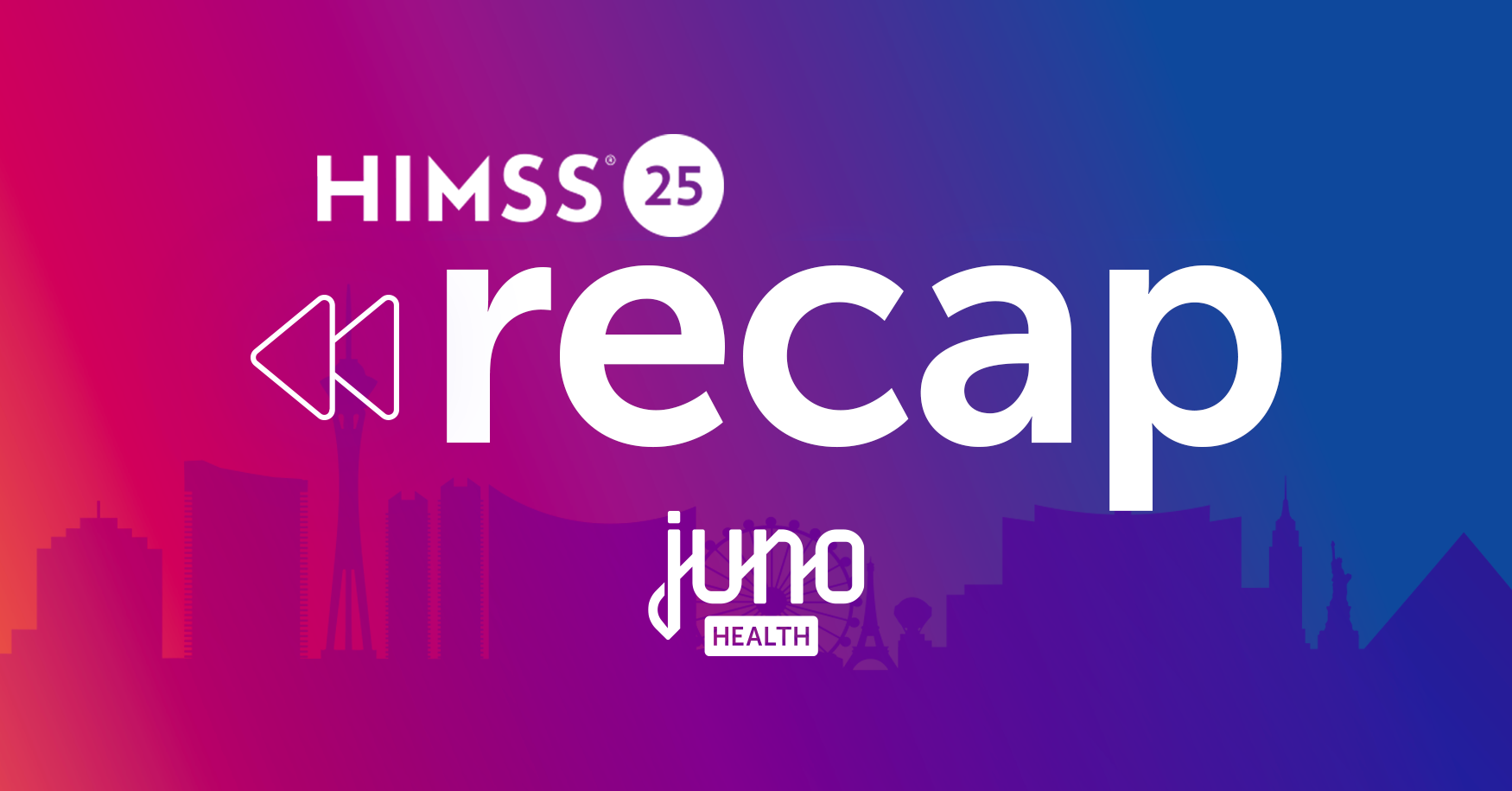Another HIMSS conference is in the books. We had a great time showing off Juno EHR, catching up with old friends, and making new ones. We heard and saw a lot in Las Vegas, but there were a few topics that seemed to come up the most.
Here are our key takeaways:
AI IS HERE. NOW WHAT?
Artificial Intelligence has been the talk of the town at HIMSS for several years. This year, however, the conversation moved even further from the theoretical to the practical. People were asking questions about how AI is working, how it is being integrated into EHRs, how it can improve patient outcomes and the patient experience, and how organizations can leverage it to help achieve their goals.
"HIMSS24 was the breakout moment for AI in healthcare—but HIMSS25 is when the industry finally caught up. The tipping point is here. AI is no longer a concept—it’s a capability. We now understand not just the value, but how to integrate it safely, securely, and compliantly into the healthcare ecosystem. The time to act is no longer 'soon'—it’s now."
— Brent D. Berrios, Senior Manager, Portfolio Management Office, Juno Health
Juno Health announced our partnership with Avo to fully integrate their AI scribe technology into Juno EHR. With HIPAA-secure ambient listening at the point of care in 50-plus languages and the ability to transcribe patient-provider interactions of three-plus participants in real time, clinicians can focus more on their interactions with patients and less on documentation.
Juno EHR will now be able to combine the captured transcription with existing EHR data, including past medical records, lab results, and evidence-based guidelines, to generate new documentation that reflects the next best steps of patient care and maximizes reimbursement potential. In addition to aiding clinicians in generating smart notes in seconds, this integration will ensure patients receive the most accurate picture of their visit.
MOST EHRS ARE STILL A BAD FIT FOR BEHAVIORAL HEALTH
Behavioral health practitioners told us EHRs designed for general medicine continue to lack the purpose-built tools needed to support the uniquely collaborative workflows needed for behaviroal health clinicians, therapists, and patients who step up or step down from inpatient to outpatient or residential settings frequently. Documentation gaps persist, from multi-disciplinary team treatment plans to group therapy management & charting, and the ability to use the EHR as a care coordination solution to ensure positive outcomes is inadequately supported.
These concerns can only be addressed by an EHR that optimizes behavioral health operations and facilitates the flow of information with personalizable behavioral health content and efficient behavioral health documentation tools as an integral part of the continuum of whole patient care, rather than an add on.
“Fragmented care and lapses in care continuity, particularly during transitions of care, are an unfortunate hallmark of behavioral health systems that don’t meet the needs of practitioners or clients. To provide the best care, behavioral health providers need personalizable and interoperable care coordination toolsets that support the flow of information within and across care settings, throughout the patient journey.” — Deanne Clark, Senior Informatics Health Consultant, Juno Health
RURAL HEALTHCARE FACES FINANCIAL ROADBLOCKS TO MODERNIZATION
Rural and small hospitals are looking to the future but still face budgetary challenges when it comes to upgrading their technology. As a result, many organizations feel they are stuck with legacy solutions that were not built for the 21st century.
“It’s always, how to pay for it and how to get that reimbursement back,” said Shawn Weldin, IT director at Sabetha Community Hospital. He went on to say that it’s important for rural hospitals to be aware of vendors who can implement the same quality of product at a smaller scale and asserted that leaders at smaller hospitals now realize that modern technology is no longer a luxury, but a necessity.
A RENEWED FOCUS ON SECURITY
We mentioned this in our HIMSS24 takeaways as well, but cybersecurity is now more important than ever. Future-forward technology like AI and smart health get the lion’s share of the attention, but we must keep innovating in the cybersecurity arena as well. In 2024, there were 734 large data breaches and data breaches have affected more than a quarter of a trillion individuals since 2009.
“Protecting patient data is a fundamental part of patient care. Healthcare organizations must do everything in their power to protect that patient data from these attacks because their companies, and potentially worse, people’s lives may depend on it.” — Andrea Hopkins, Chief Information Security Officer, Juno Health
Ransomware and human error also continue to be serious threats, with hospital systems being forced to make record-breaking payouts to cybercriminals and catastrophic failures occurring due to the use of third-party IT solutions. Clearly, every organization needs to take cybersecurity seriously and have a comprehensive plan in place both to protect themselves from attacks and to recover if one should occur.
GET TO KNOW JUNO HEALTH
If you didn’t get a chance to check out Juno EHR at HIMSS25, we’d love to show it off to you. Schedule some time with us and we’ll give you a closer look at our ONC, HIPAA, and HITEC certified EHR solutions.



